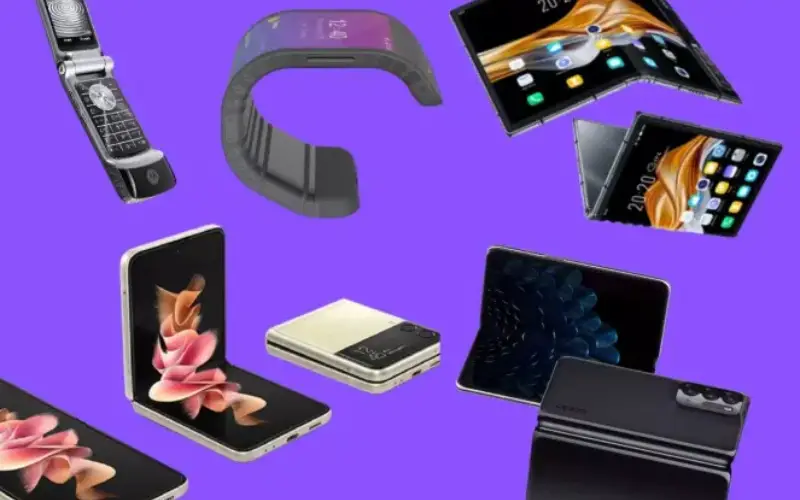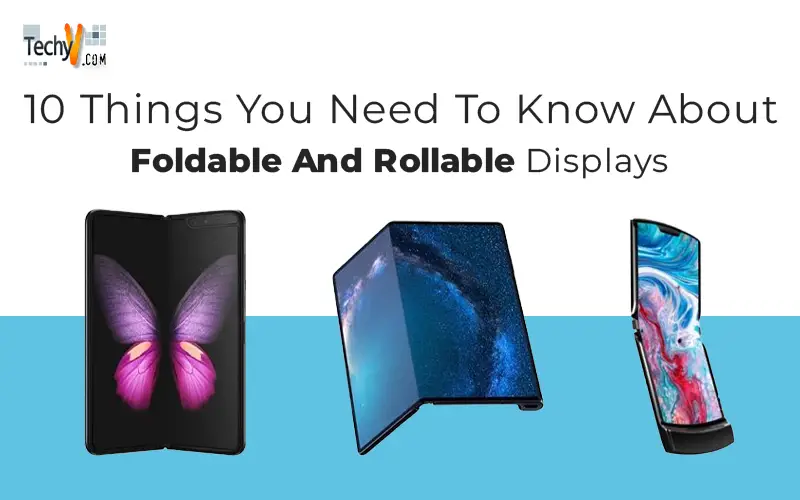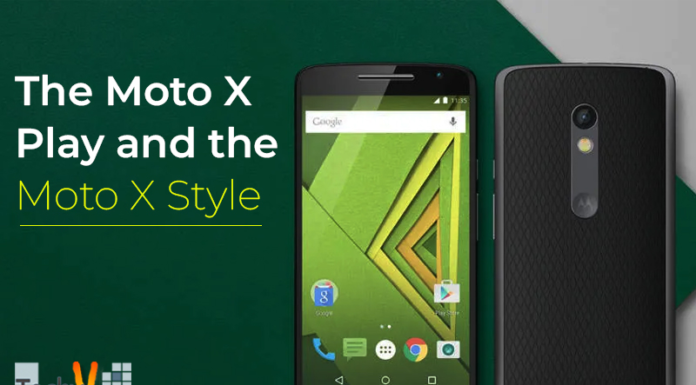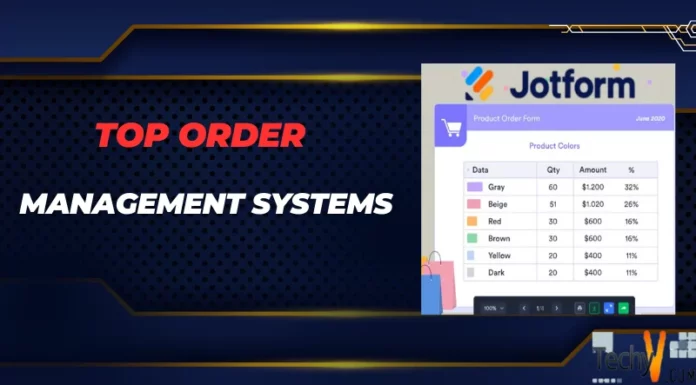Innovative screen technology called foldable and rollable displays makes panels flexible and bendable so t can fold or roll up like a sheet of paper. This technology is made feasible by employing uncommon materials like OLED (organic light-emitting diode) technology, which can bend without breaking or harming the screen. The fundamental advantage of foldable and rollable displays is that they enable the development of new form factors and application scenarios, as well as significantly smaller and more portable computers. Designing foldable and rollable displays poses several technological difficulties, such as assuring durability, using appropriate materials, and building dependable hinges and motors. Many devices, including smartphones, tablets, and televisions, have foldable or rollable screens despite their drawbacks.
1. A Revolutionary New Technology
“Revolutionary new technology” refers to a breakthrough innovation representing a significant departure from traditional or existing technologies. Foldable and rollable displays, which enable panels to be twisted and folded in previously impractical ways, are regarded as cutting-edge new technologies since they bring an entirely new method of engaging with screens. With outstanding design, mobility, and utility options, this technology may transform how we use and interact with our electronics. Foldable and rollable screens have the potential to expand markets and applications by enabling the creation of more compact and adaptable gadgets. Therefore, this is why organizations from all walks of life, including companies and academic institutions, are investing in this technology and expressing great interest in it.
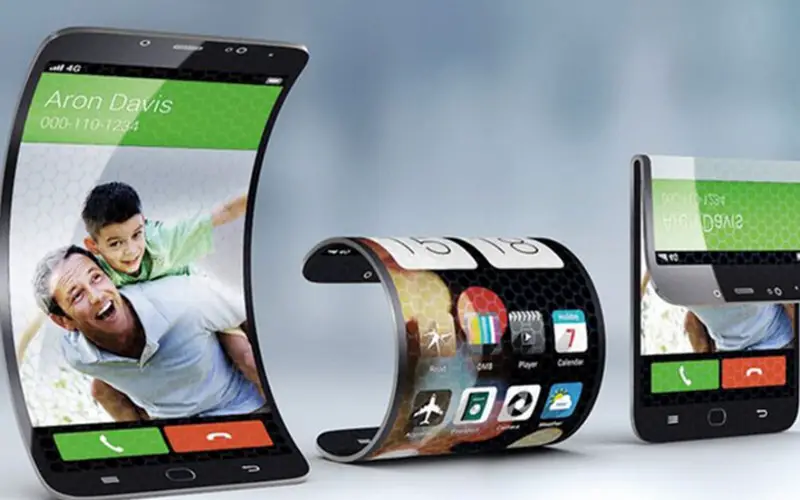
2. Bend It Like Never Before
“Bend it like never before” refers to the incredible flexibility of foldable and rollable displays. This technology allows presentations to be bent, folded or rolled up like paper without harming the screen. With more design and functionality options made possible by this flexibility, gadgets grow more portable, adaptable, and compact. Might fold A smartphone with a foldable display in half for more effortless mobility. Alternatively, a retractable screen is possible to create. They utilized a rollable production, which users can extend or retract. This technique may be used for unusual materials like OLED (organic light-emitting diode) technology since it can bend and flex without breaking. With foldable and rollable screens, screen technology will be versatile, adaptable, and creative in the future.
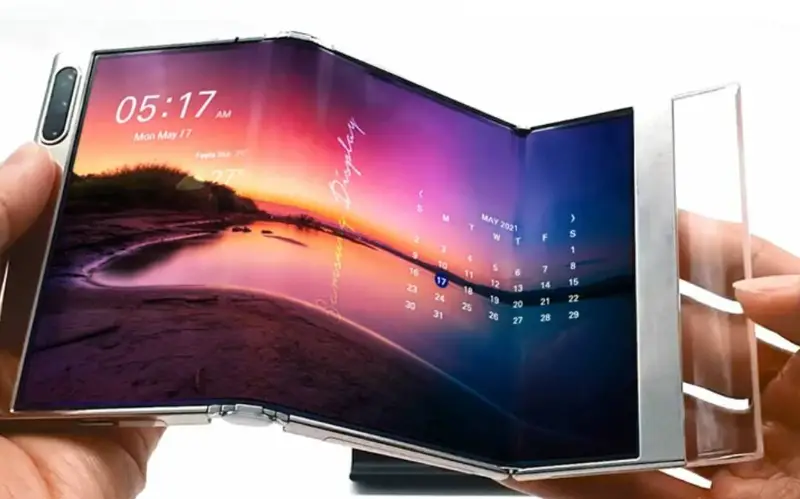
3. The Future Of Portable Devices
Developing foldable and rollable screens is crucial to the future of portable gadgets. These displays are revolutionizing how we use screens and enabling the development of more miniature, versatile, movable goods. If it can be folded the show or rolled up, devices may be smaller and more portable without compromising screen size. It may result in a new wave of cutting-edge mobile gadgets, including foldable tablets, laptops, and smartphones. Rollable displays It might also find application in devices like smartwatches, which have small screens yet need flexibility badly.
Moreover, foldable and rollable screens provide unimaginable options for new use cases and form factors. For instance, a gadget with a foldable display may be a tablet or a smartphone. Overall, the future of portable devices looks exciting and promising with the introduction of foldable and rollable displays.
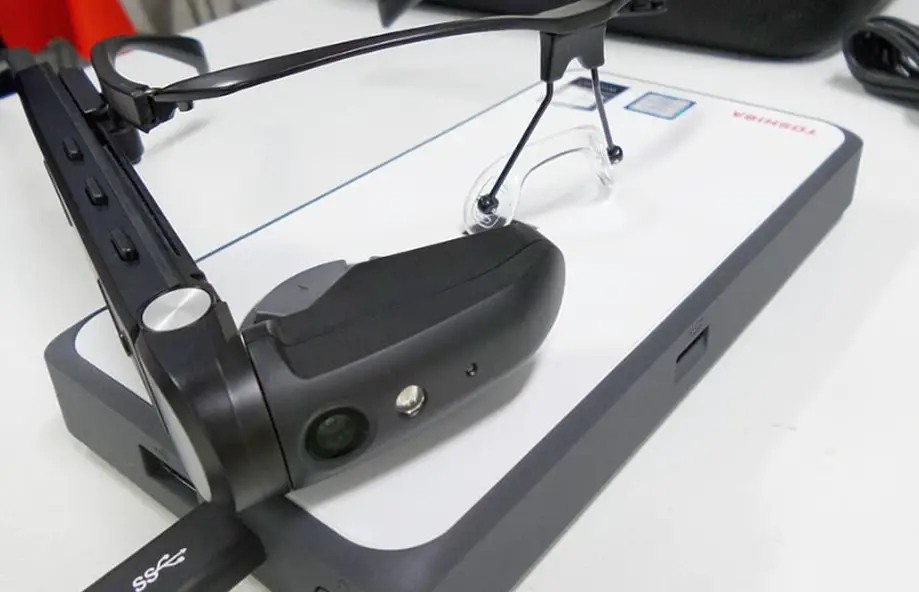
4. The Advantages Of Foldable And Rollable Displays
The following benefits are offered by folding and rolling displays:
- Less bulky and portable gadgets: More portable and small technology: Devices may be made smaller and more portable without sacrificing screen size, thanks to folding and rolling displays. It may ease the portability and mobile use of gadgets.
- New form factors and use cases: Foldable and rollable displays provide prospects for new device designs, such as those that can fold or roll up or change shape to meet the user’s demands.
- Increased screen real estate: Foldable displays can provide larger screens than traditional devices while still being portable and compact. It can be beneficial while using applications, browsing the web, or viewing movies.
- Durability: Foldable and rollable screens are built to last, with materials that can bend and flex without breaking. It can make gadgets more resistant to harm from drops or collisions.
Foldable and rollable screens have a lot of advantages, and they might revolutionize how we use and interact with technology.
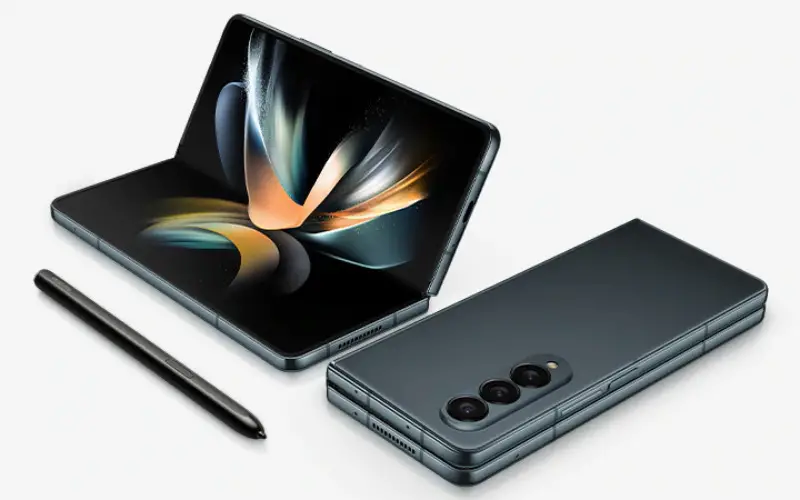
5. OLED Technology And Beyond
Foldable and rollable displays are OLED technology that allows for flexible and bendable screens. The following details on OLED technology and beyond provide the following information for foldable and rollable screens.
- Foldable OLED Displays: Instead of glass, foldable OLED displays produce screens. Can use Flexible materials to create. You can fold it without breaking using flexible materials like plastic. It allows more extensive collections to be folded in half, making them easier to handle and transfer—the first commercially available foldable. Samsung debuted the OLED display in 2019 with the unveiling of the Galaxy Fold.
- Rollable OLED Displays: Screens with rollable It is possible to fold OLED displays like a poster or a newspaper. This technology may show a high-quality image on a tiny, flexible OLED panel that can be coiled and unrolled. LG introduced the first rollable OLED display in 2021 with the LG Rollable TV.
Stretchable OLED Displays: Stretchable OLED displays can stretch like rubber without losing image quality. With this technology, an OLED panel that is both thin and flexible may be twisted and stretched without losing image quality. OLED technology is advancing and is what We can expect.to boost flexibility and bring new form factors.
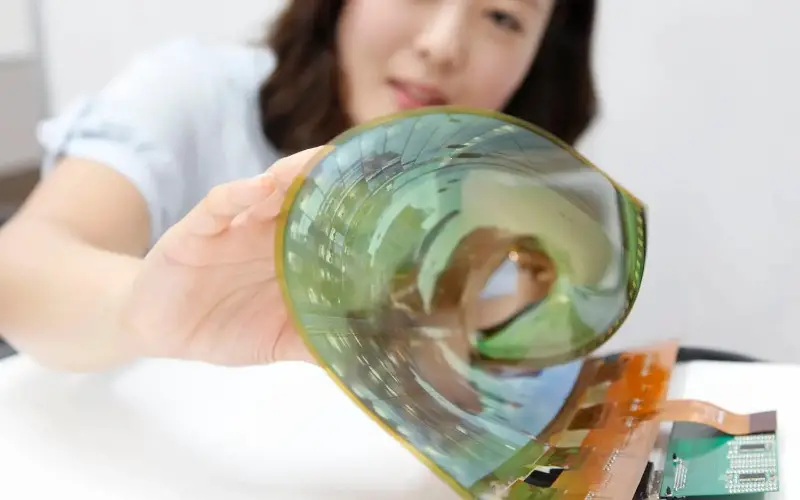
6. A New Era Of Screens
How we engage with electronic gadgets changes as we enter a new era of displays and significant developments in display technology. These are some of the key trends in this new era:
- Increasing Resolution: Display resolutions are constantly rising, and 4K and 8K panels are beginning to appear more often. May utilize These higher-resolution panels’ greater clarity and depth. Enhance high-end gaming displays and large-screen televisions.
- WCG and HDR: These two technologies make it possible for televisions to display more vibrant and realistic colours. This technology creates an immersive viewing experience more common in Televisions and monitors.
- Higher Refresh Rates: Higher refresh rates, measured in Hz, allow smoother, more fluid motion on screens. Gaming displays and high-end smartphones now frequently have refresh rates of 120Hz or more.
- Flexible Screens: Offering novel form factors for electronic devices, flexible screens, including those in foldable and rollable displays, are available. OLED technology makes these screens possible, allowing for more portable and versatile machines.
- Transparent Screens: Another new trend, transparent screens provide new options for displays in public areas, including shopping malls, museums, and transit hubs. These screens can display information while allowing for transparency, creating a unique and engaging viewing experience.
Generally, the focus on more immersive, flexible, and adaptable display technology characterizes the new screen age. We anticipate many more inventive and fascinating ideas in the future as this technology develops.
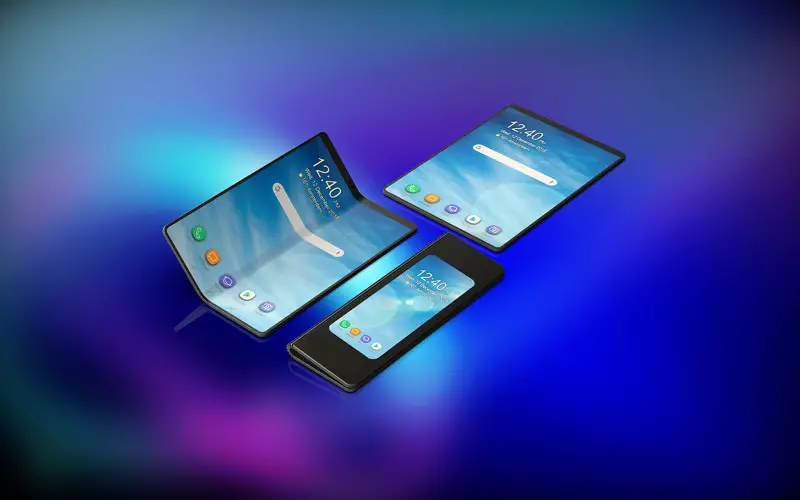
7. From Phones To TVs
A new form of technology called foldable and rollable displays is beginning to alter the way we think about screens for phones and TVs. Here are some details:
- Foldable displays: These displays allow for larger screens on smaller devices, such as smartphones and tablets. Yet, foldable displays could provide a more immersive viewing experience for Televisions by enabling panels to be curled or wrapped around the viewer.
- Rollable displays: These can be rolled up like a scroll and stored when not in use, offering a space-saving solution for TVs. LG has already released a rollable TV that can roll up and hide when unused.
Other technologies, such as microLED displays, surpassing standard LED or OLED displays in terms of brightness, contrast, and energy economy, are being investigated for televisions, folding, and rollable screens. We anticipate numerous developments and discoveries in display technology during the next few years.
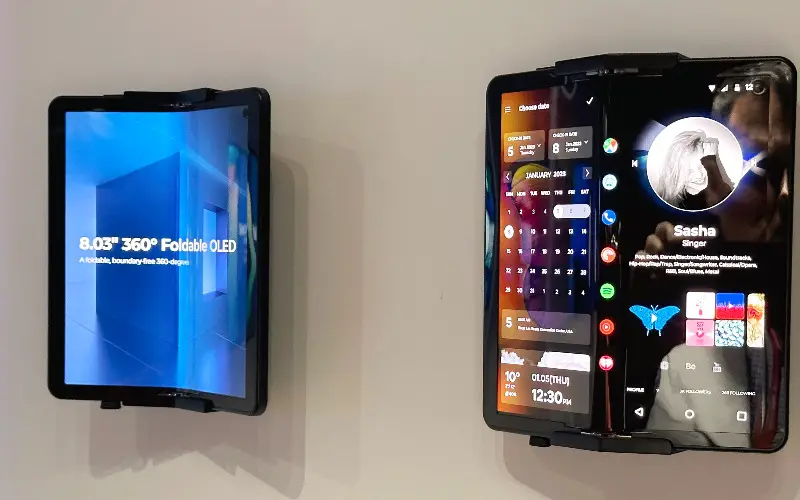
8. The Challenges Of Creating Foldable And Rollable Displays
Developing foldable and rollable displays has created increasingly mobile and flexible electronic devices. Nevertheless, creating these displays poses several challenges, including:
- The screens must be sturdy enough to endure repeated folding and bending without breaking or losing effectiveness. The utilization of solid materials and advanced manufacturing methods is necessary for this.
- Flexibility: The screens must flex without breaking while maintaining a high resolution and brightness.
- Uniformity: Even when bent or folded, the display’s brightness and colour should be consistent over its whole surface.
- Dimensions: The screens must accommodate technical components while being as light and thin as possible.
- Cost: Due to the utilization of novel materials and manufacturing techniques, the production cost of these displays is relatively expensive.
- Power consumption: Foldable and rollable displays require a different type of lighting and power source than traditional displays, which can result in higher power consumption.
- Compatibility: These displays would need specialized software and hardware to function with current gadgets, which might cause problems.
The user interface of the foldable and rollable screens must be simple to operate, without any apparent creases or seams that can obstruct how the user interacts with the device.
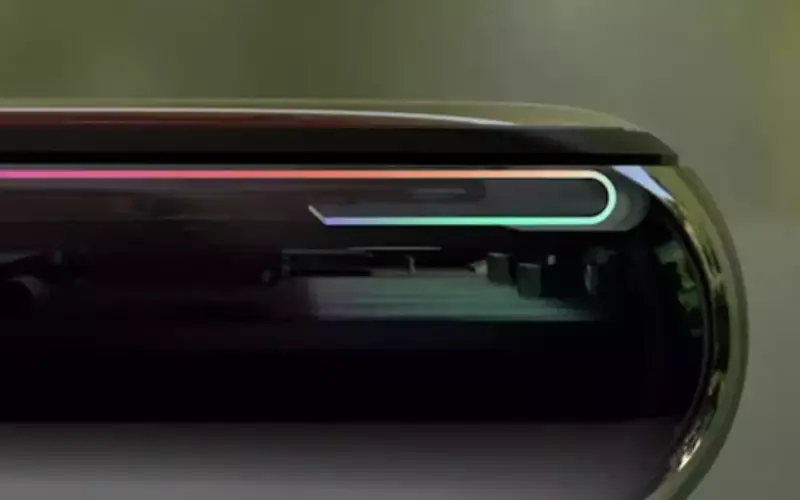
9. A Look At The Market
Although still relatively young, the foldable and rollable screens market is multiplying. As of 2021, a select few companies, like Samsung, Huawei, and Motorola, have created products with foldable or rollable screens. Due to reliability, price, and software compatibility difficulties, these devices have drawn mixed reviews.
Manufacturers are optimistic that the foldable and rollable screens market will grow in the coming years despite their challenges. The company is committed to enhancing technology and lowering production expenses to meet market demands. These displays have various possible applications, from flexible electronic wearables to rollable televisions and foldable smartphones and tablets.
Customer demand, governmental regulations, and technological advancements are a few of the factors that may impede the growth of the market for foldable and rollable displays. Although there is no denying the benefits of folding and rollable displays. There is a projection that will explore new and innovative applications for this technology.
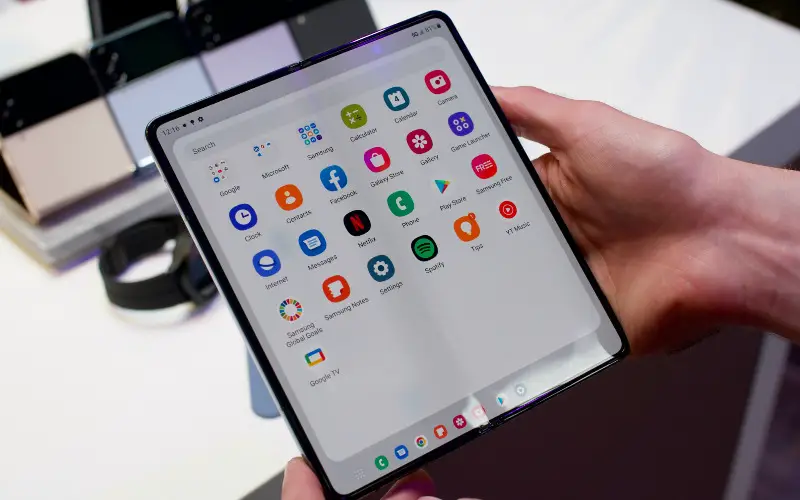
10.What’s Next For Foldable And Rollable Displays
The development of new uses and ongoing technical breakthroughs bode well for the future of foldable and rollable screens. The following changes might occur in the future years:
- Durability: Manufacturers are attempting to develop rollable and foldable screens that are stronger when bent, folded, and twisted.
- More extensive displays: As technology develops, we anticipate seeing larger screens with greater resolutions that are easier to fold or pack for travel. We can see foldable and rollable screens in the healthcare, educational, and entertainment industries.
- More Compatibility: We may see more hardware and software compatibility as technology develops.
- Lower Production Costs: If the technology takes off, we may anticipate lower manufacturing costs, translating into lower pricing for consumers purchasing foldable and rollable screens.
Therefore, the future of displays that can fold and roll is promising. We anticipate seeing even more innovative applications and better user experiences as technology develops.
